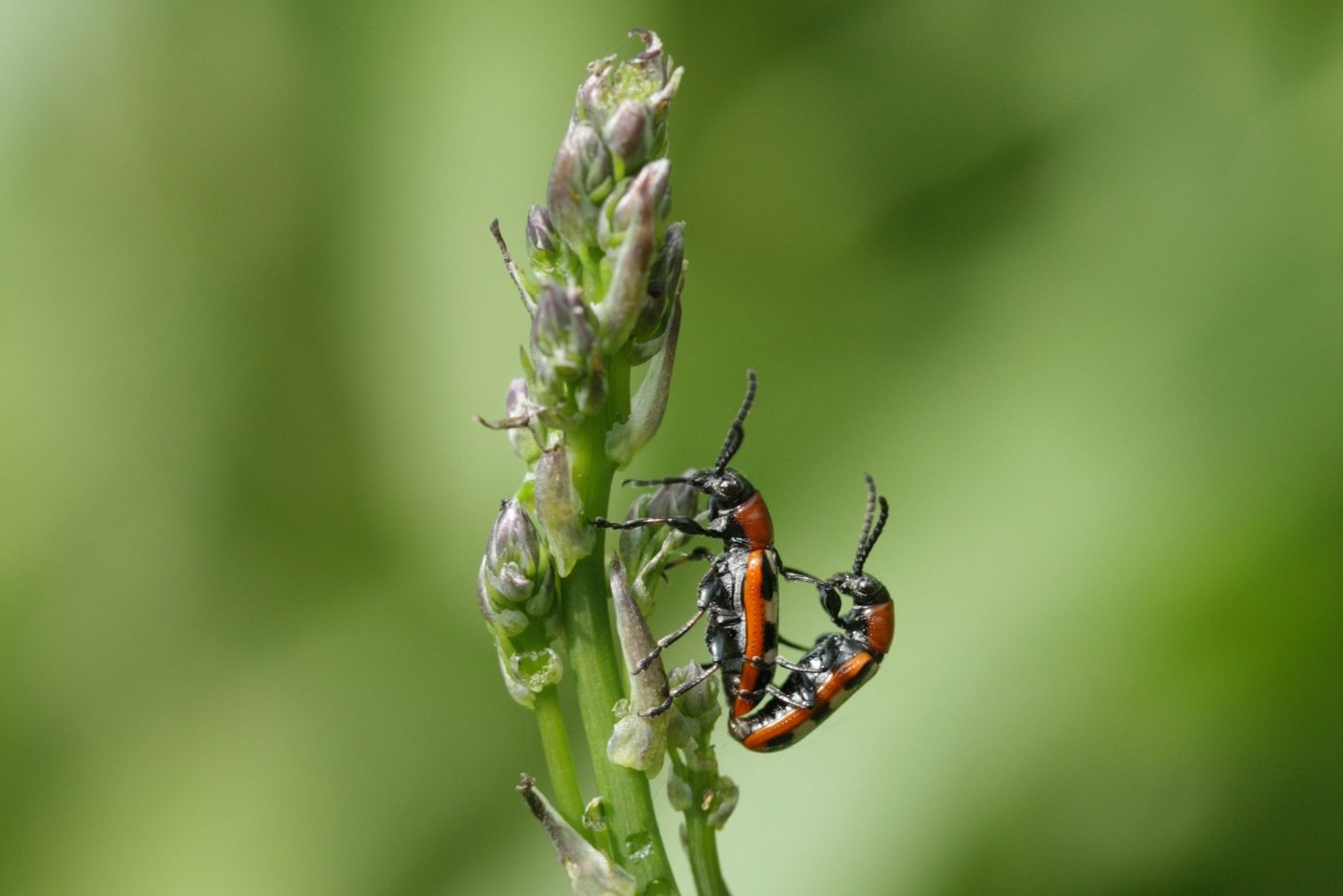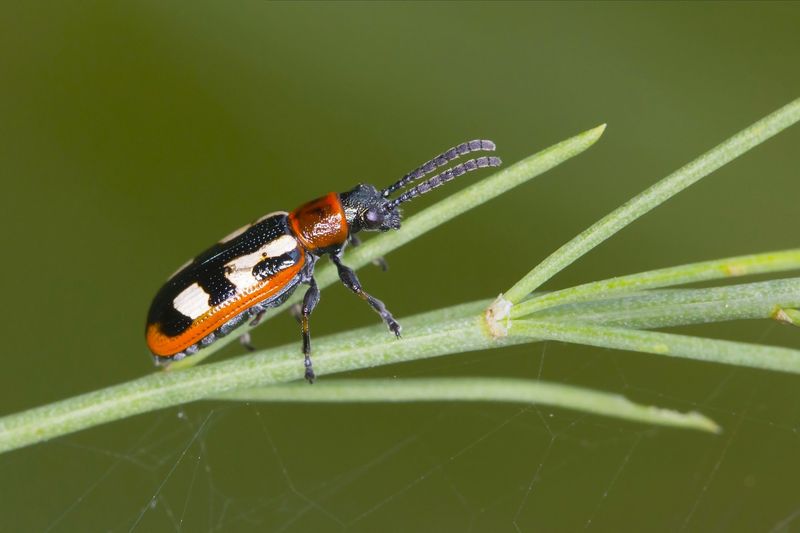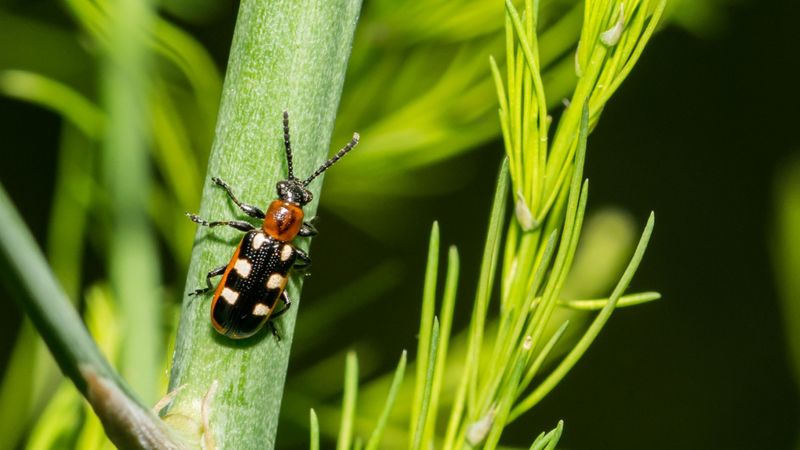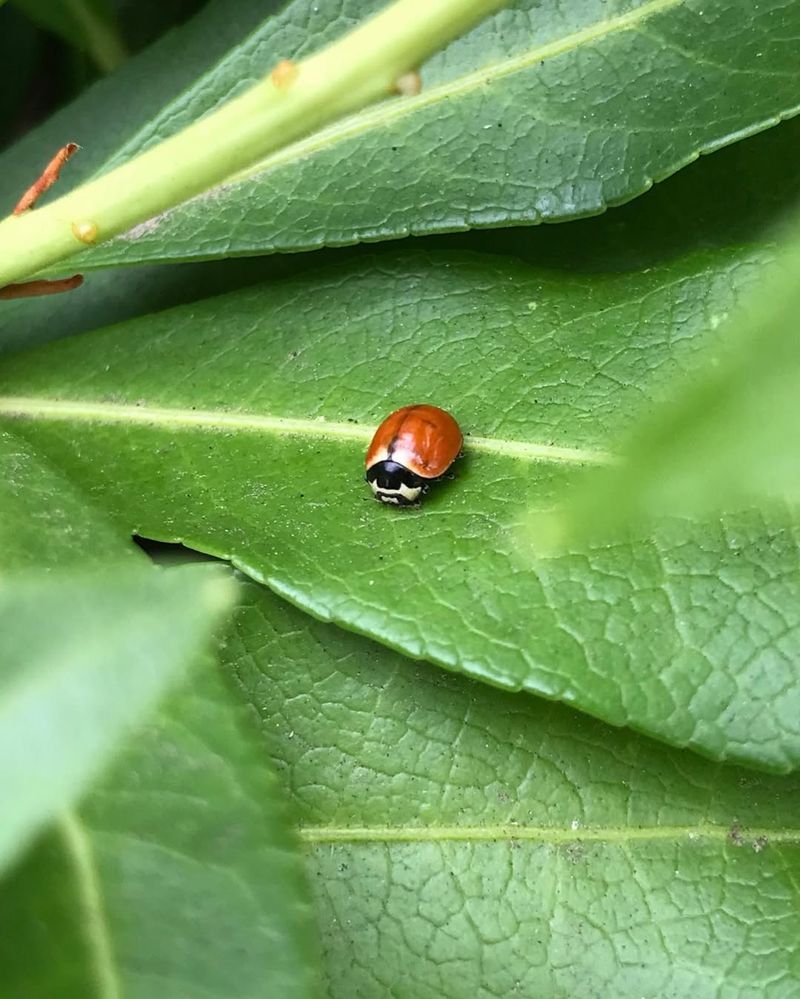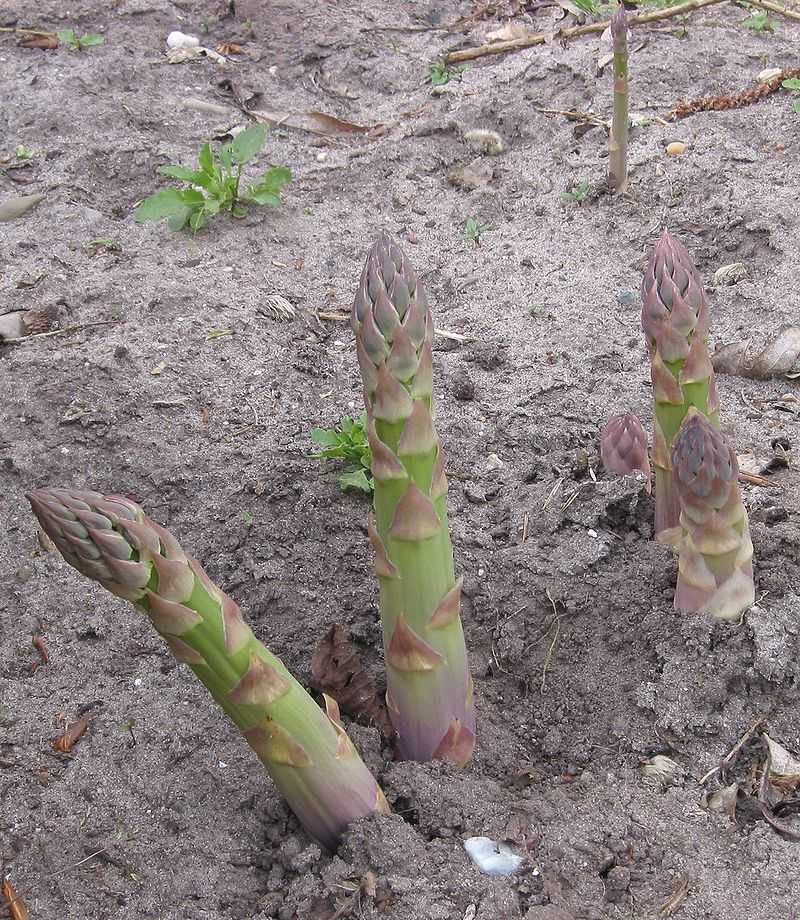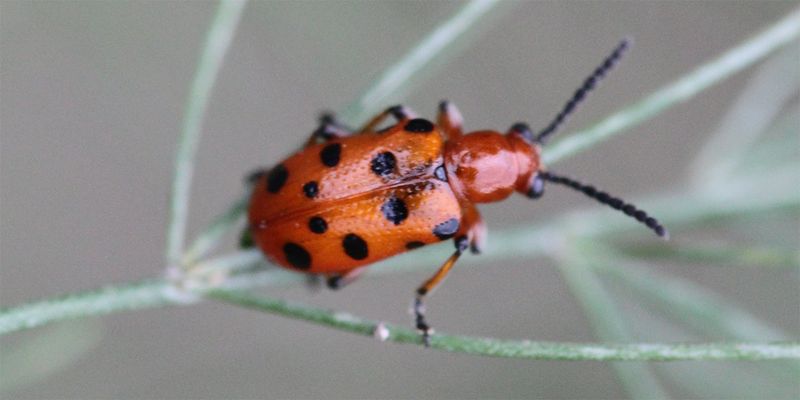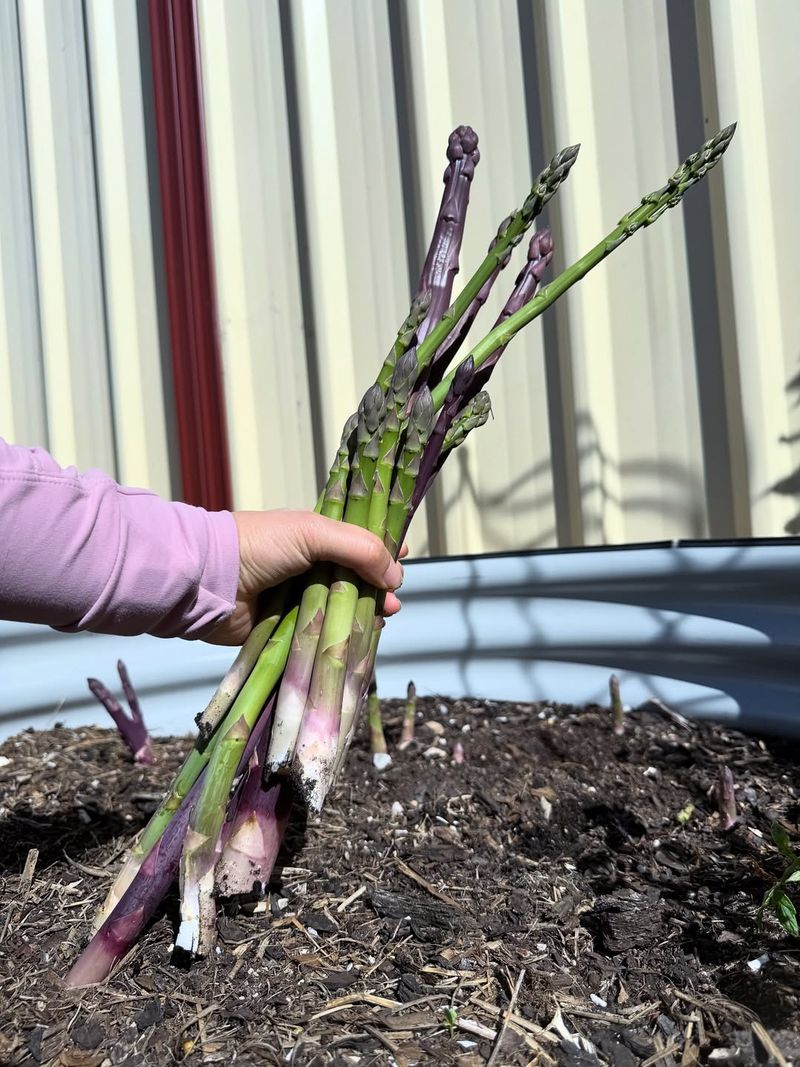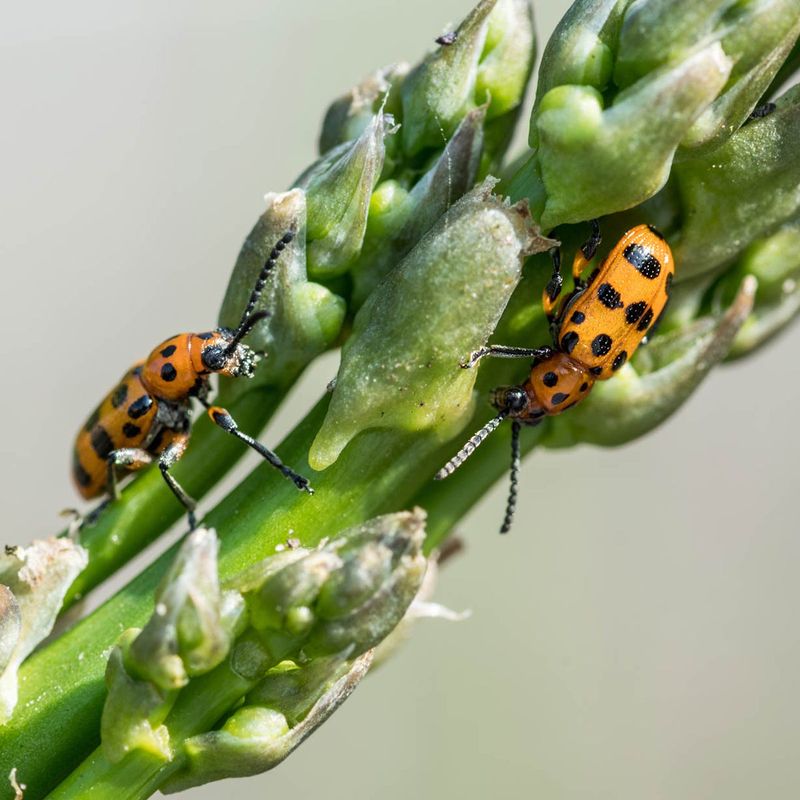October arrives in Idaho with cooler temperatures and shorter days, creating the perfect window for tackling garden pests before winter settles in.
Asparagus beetles can wreak havoc on your crop if left unchecked, but fall offers unique advantages for controlling these hungry insects. Taking action now means healthier plants and a more productive harvest come spring.
1. Cool Nights Slow Beetle Activity
As temperatures drop across Idaho in October, beetle movement slows considerably. The insects become sluggish and less able to escape when you’re inspecting your asparagus bed. This makes hand-picking much easier than during the heat of summer.
Walk through your garden in the morning when it’s coolest. Look along the ferns and stems for any remaining adults or larvae. A quick sweep with gloved hands removes them before they can lay more eggs or find shelter.
In my garden, I’ve noticed beetles practically freeze in place during chilly October mornings. It’s honestly the easiest time to catch them without the usual chase.
2. Fall Cleanup Removes Overwintering Sites
Garden debris left standing becomes a cozy hotel for beetles planning to survive the winter. October is when most Idaho gardeners start their fall cleanup routine, cutting back spent asparagus ferns and removing plant litter. This timing disrupts the beetle’s natural lifecycle perfectly.
Cut your asparagus foliage down to ground level once it turns brown. Bag it up or burn it rather than composting, since eggs and adults can survive in the pile. Clear away mulch and inspect the soil surface for any hidden pests.
For me, this is usually the time I spot the last few beetles hiding near the base of plants. A thorough cleanup really does make a difference by spring.
3. Natural Predators Are Still Active
Beneficial insects haven’t disappeared yet in early fall. Ladybugs, lacewings, and parasitic wasps continue hunting for prey during Idaho’s mild October days. These helpers will gladly feast on beetle eggs and larvae still clinging to your asparagus plants.
Encourage these allies by planting late-blooming flowers nearby like asters or goldenrod. Avoid harsh chemical sprays that would kill both pests and predators. Let nature do some of the heavy lifting while conditions are still favorable.
I always keep a few flowering herbs around my asparagus patch. Watching ladybugs patrol the ferns in October feels like having a tiny cleanup crew working for free.
4. Soil Preparation Interrupts Beetle Cycles
Lightly working the soil surface around your asparagus crowns exposes hidden beetles and larvae to predators and harsh weather. October’s conditions in Idaho mean the ground is still workable but cool enough that you won’t disturb plant roots preparing for dormancy.
Use a garden fork to gently turn the top few inches of soil near your plants. Any exposed insects will either be eaten by birds or killed by upcoming frosts. Add a fresh layer of compost afterward to boost soil health for next season.
This simple habit has become part of my fall routine. It takes maybe twenty minutes but gives me real peace of mind heading into winter.
5. Shorter Days Limit Beetle Reproduction
Daylight hours shrink rapidly in October across Idaho, signaling beetles to stop reproducing and start seeking shelter. Fewer eggs mean fewer larvae damaging your plants. This natural slowdown gives you an advantage when trying to reduce next year’s population.
Focus your control efforts on eliminating any remaining adults before they can hunker down. Check under leaves and along stems where beetles like to hide. Even removing a handful now prevents dozens more next spring.
I find this time of year oddly satisfying. The beetles are winding down, and so am I, but there’s still time to get ahead of the problem.
6. Companion Plants Finish Their Protective Work
If you planted marigolds, nasturtiums, or tomatoes near your asparagus earlier in the season, they’ve been quietly deterring beetles all summer. Now in October, these companions are finishing their lifecycle, and it’s time to assess how well your strategy worked and plan for next year.
Pull up spent companion plants and note where beetle damage was lightest. Save seeds from the most effective varieties to replant next spring. Rotate locations slightly if certain spots saw heavier infestations despite your efforts.
In my experience, nasturtiums really seem to confuse the beetles. I always make sure to scatter a few around the asparagus patch each spring after seeing October’s results.
7. Early Action Protects Next Spring’s Harvest
Controlling beetles in October directly impacts the quality and quantity of spears you’ll harvest next spring. Fewer overwintering adults mean less damage to tender young shoots when they emerge. Idaho’s asparagus season is short enough without losing precious spears to hungry pests.
Think of October control as an investment in next year’s crop. Document what you did this fall so you can repeat successful strategies. Take photos of your cleaned beds and mark your calendar for early spring monitoring.
There’s something deeply satisfying about harvesting perfect spears in May, knowing the work I did back in October made it possible. It’s a simple payoff that keeps me motivated year after year.

